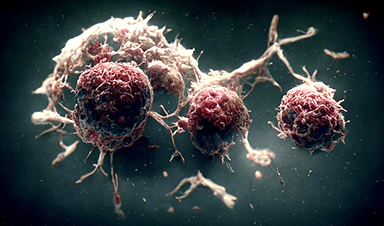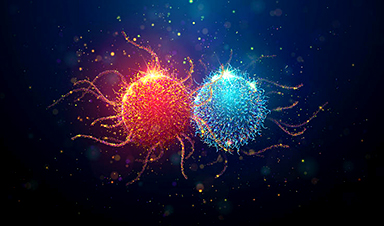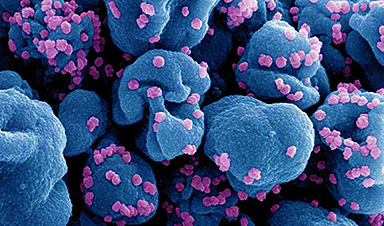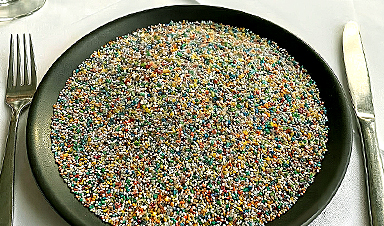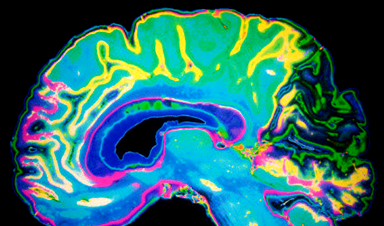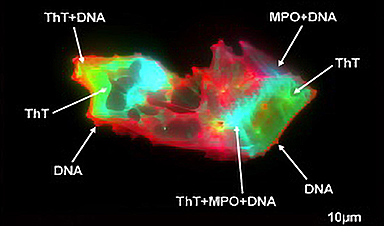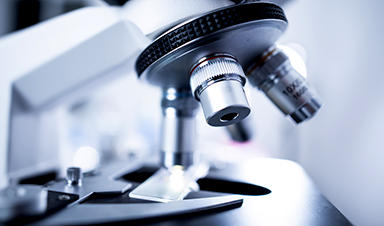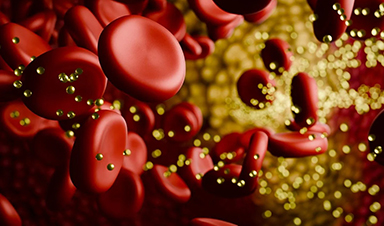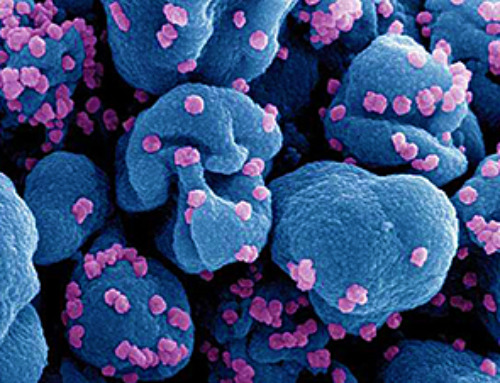Electronic and photonic devices have unique functionalities for converting chemical and biological processes into electrical or optical signals to detect, identify, and monitor these processes. Integrating nanotechnology concepts has led to various innovative optoelectronic designs that empower next-generation devices.
Deoxyribonucleic acid (DNA) is the molecule that stores and transmits genetic information in biological systems. These molecules are versatile substrates for chemical modification and functionalization, facilitating the attachment of nanocargoes at predetermined locations. DNA nanostructures have been used as templates for the fabrication of inorganic structures.
Although DNA molecules are promising building blocks for nanostructures, DNA-based optical or electronic devices have not yet been commercialized. A recent article published in Bioconjugate Chemistry discussed the potential applications of DNA nanotechnology in electronics and photonics through four case studies: quantum computing devices, carbon nanotube transistors, enzymatic fuel cells, and artificial electromagnetic materials.
DNA Nanotechnology and its Application in Nanofabrication
DNA nanotechnology has widened the applications of DNA molecules by applying them to assemble and connect structural motifs. These molecules have contributed extensively to the fields of nanoscience and nanotechnology and have revolutionized molecular self-assembly. DNA nanotechnology offers superior programmability to realize accurate self-assembly in three-dimensional (3D) structures and has evolved sufficiently to be commercialized.
In addition to its applications in engineering and physics, DNA nanotechnology has been exploited in biomedicine. DNA molecules tethered to nanocargoes or nanosurfaces have been frequently reported as highly functionalized nanoscale platforms.
In photonics and electronics, nanometer-scale platforms are fabricated using either top-down or bottom-up methods. Top-down approaches (such as electron beam lithography and photolithography) can produce sub-100 nanometers geometries with features of 20 nanometers. However, the inability to offer such characteristics on a centimeter scale at the same speed and affordability substantially restrict their applicability.
Alternatively, the application of DNA nanotechnology for nanofabrication enables the construction of 3D platforms via a combination of chemical reactions and nanoscale shapes, with scope for modulation. The present study sheds light on DNA nanotechnology involving processes through four case studies that have contributed immensely to photonic and electronic applications.
Quantum computing
A qubit is the simplest quantum system that enables information processing in quantum computers in radically different ways. Hence, qubit-based quantum computers are faster than classical computers and require a supporting component to stabilize and manipulate qubits. Although qubit-based quantum computers with silicon hardware have been hypothesized to be more advantageous than classical computers, their realization is challenging.
Few quantum information processing systems use Josephson junctions to create qubits. In this regard, DNA nanostructures can be used to assemble 3D arrays of Josephson junctions, which is otherwise unattainable using conventional methods, indicating the scope of DNA nanotechnology in fabricating quantum computing hardware.
Carbon nanotube (CNT) transistors
Structural DNA nanotechnology utilizes DNA molecules as programmable information-coding polymers to create high-order structures at the nanometer scale. For example, in DNA origami tiles, a long single-stranded viral genome (scaffold strand) is folded into arbitrary shapes using hundreds of short synthetic oligonucleotides (staple strands).
Previous studies have shown that templated metallization uses DNA origami tile as a substrate to fabricate interconnects in circuits. Additionally, DNA origami can be used as a template for conducting metal-semiconductor junctions, yielding complex metal nanostructures.
Furthermore, DNA origami tiles have also been used to arrange organic materials and polymers in curved patterns, which is beneficial for technologies such as wearable devices for health monitoring or bendable smartphones that require flexible electronic circuitry.
Enzymatic fuel cells or biobatteries
DNA nanotechnology has great potential for developing enzymatic fuel cells, wherein DNA-based hydrogels can be used as the medium.
DNA origami structures and hydrogels enable facile assembly under environmentally benign conditions compared with conventional devices that use dangerous materials. As scope for the future, researchers anticipate developing DNA hydrogel biobatteries with enhanced power density, energy, and longevity, by refining the electron transfer pathway and scrutinizing suitable enzymes/substrates.
Artificial electromagnetic material
DNA nanotechnology has several applications in the field of photonics. Nanocavities are used in quantum optical studies to confine light using subwavelength-scaled resonating modes. They require emitters to be placed at accurate positions. Gopinath et al. demonstrated that dye molecules targeted at different locations on a DNA structure within a photonic crystal cavity (PCC) enabled tunable emission based on the electric-field intensity of the PCC.
Another study by Kuzyk et al. used DNA nanorods as a substrate to link a gold nanosphere-based helical string to induce a chiroptical response. The left- and right-handed helices generated bisignate circular dichroism spectra.
Conclusion
Overall, a problem-driven approach, wherein the design of the device is guided by thorough knowledge of the demands of the target market and device specifications, would ease the translation of DNA nanotechnology research to the mark of commercialization. This approach could help to develop new innovative designs based on DNA nanotechnology that could be applied in photonics and electronics. Coupling it with efficient methods for scaling up at lower costs can be an additional advantage.
News
Scientists Melt Cancer’s Hidden “Power Hubs” and Stop Tumor Growth
Researchers discovered that in a rare kidney cancer, RNA builds droplet-like hubs that act as growth control centers inside tumor cells. By engineering a molecular switch to dissolve these hubs, they were able to halt cancer [...]
Platelet-inspired nanoparticles could improve treatment of inflammatory diseases
Scientists have developed platelet-inspired nanoparticles that deliver anti-inflammatory drugs directly to brain-computer interface implants, doubling their effectiveness. Scientists have found a way to improve the performance of brain-computer interface (BCI) electrodes by delivering anti-inflammatory drugs directly [...]
After 150 years, a new chapter in cancer therapy is finally beginning
For decades, researchers have been looking for ways to destroy cancer cells in a targeted manner without further weakening the body. But for many patients whose immune system is severely impaired by chemotherapy or radiation, [...]
Older chemical libraries show promise for fighting resistant strains of COVID-19 virus
SARS‑CoV‑2, the virus that causes COVID-19, continues to mutate, with some newer strains becoming less responsive to current antiviral treatments like Paxlovid. Now, University of California San Diego scientists and an international team of [...]
Lower doses of immunotherapy for skin cancer give better results, study suggests
According to a new study, lower doses of approved immunotherapy for malignant melanoma can give better results against tumors, while reducing side effects. This is reported by researchers at Karolinska Institutet in the Journal of the National [...]
Researchers highlight five pathways through which microplastics can harm the brain
Microplastics could be fueling neurodegenerative diseases like Alzheimer's and Parkinson's, with a new study highlighting five ways microplastics can trigger inflammation and damage in the brain. More than 57 million people live with dementia, [...]
Tiny Metal Nanodots Obliterate Cancer Cells While Largely Sparing Healthy Tissue
Scientists have developed tiny metal-oxide particles that push cancer cells past their stress limits while sparing healthy tissue. An international team led by RMIT University has developed tiny particles called nanodots, crafted from a metallic compound, [...]
Gold Nanoclusters Could Supercharge Quantum Computers
Researchers found that gold “super atoms” can behave like the atoms in top-tier quantum systems—only far easier to scale. These tiny clusters can be customized at the molecular level, offering a powerful, tunable foundation [...]
A single shot of HPV vaccine may be enough to fight cervical cancer, study finds
WASHINGTON -- A single HPV vaccination appears just as effective as two doses at preventing the viral infection that causes cervical cancer, researchers reported Wednesday. HPV, or human papillomavirus, is very common and spread [...]
New technique overcomes technological barrier in 3D brain imaging
Scientists at the Swiss Light Source SLS have succeeded in mapping a piece of brain tissue in 3D at unprecedented resolution using X-rays, non-destructively. The breakthrough overcomes a long-standing technological barrier that had limited [...]
Scientists Uncover Hidden Blood Pattern in Long COVID
Researchers found persistent microclot and NET structures in Long COVID blood that may explain long-lasting symptoms. Researchers examining Long COVID have identified a structural connection between circulating microclots and neutrophil extracellular traps (NETs). The [...]
This Cellular Trick Helps Cancer Spread, but Could Also Stop It
Groups of normal cbiells can sense far into their surroundings, helping explain cancer cell migration. Understanding this ability could lead to new ways to limit tumor spread. The tale of the princess and the [...]
New mRNA therapy targets drug-resistant pneumonia
Bacteria that multiply on surfaces are a major headache in health care when they gain a foothold on, for example, implants or in catheters. Researchers at Chalmers University of Technology in Sweden have found [...]
Current Heart Health Guidelines Are Failing To Catch a Deadly Genetic Killer
New research reveals that standard screening misses most people with a common inherited cholesterol disorder. A Mayo Clinic study reports that current genetic screening guidelines overlook most people who have familial hypercholesterolemia, an inherited disorder that [...]
Scientists Identify the Evolutionary “Purpose” of Consciousness
Summary: Researchers at Ruhr University Bochum explore why consciousness evolved and why different species developed it in distinct ways. By comparing humans with birds, they show that complex awareness may arise through different neural architectures yet [...]
Novel mRNA therapy curbs antibiotic-resistant infections in preclinical lung models
Researchers at the Icahn School of Medicine at Mount Sinai and collaborators have reported early success with a novel mRNA-based therapy designed to combat antibiotic-resistant bacteria. The findings, published in Nature Biotechnology, show that in [...]

